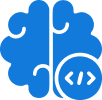Snowflake Summit 2025 was unlike any other summit that happened before. It was a like a magnificent product launchpad, and it did full justice to the action-packed four days as part of the event schedule.
The data-cloud giant showed how it plans to cut query costs, add trusted AI, and open its platform to every format from Iceberg to Postgres. Leaders teased faster warehouses, live FinOps alerts, and chat-style analytics that turn plain English into charts. They also sealed a $250 million Postgres deal and signed on as the data engine for the LA 28 Olympics. Staggering, isn’t it?
Why does this matter though, you may ask?
Because teams everywhere still wrestle with slow reports, rising bills, and security gaps. Snowflake’s new moves promise hands-off tuning, real-time guardrails, and AI tools that stay inside the same secure walls.
The highlights below break down what shipped, what’s in preview, and how each change could move the needle on cost, speed, and trust.
Compute that runs faster and costs less
Gen2 Standard Warehouses hit general availability and already show about 2.1× faster query time in live customer tests. Pair that with Snowflake Adaptive Compute (private preview) and the platform now picks cluster size, parks idle nodes, and pools resources across jobs without manual tuning.
- To keep Snowflake pricing in check, the FinOps console adds Cost-Based Anomaly Detection (public preview) and Tag-Based Budgets (GA soon). Both alert teams to cost spikes before month-end surprises.
- Workspaces now bundle inline Copilot help, Git sync, and a GA Terraform provider, so builders can code, test, and ship inside one browser tab.
- Python 3.9 is live in Notebooks, plus custom Git URLs for smoother CI/CD.
Take-away: Faster analytics with less knob-twisting and clearer bills.
Stronger governance and security
Horizon Catalog gains an AI Copilot for natural-language search plus Iceberg catalog-linked databases, so data stewards can find and govern tables sitting outside the core warehouse.
On access control, Snowflake now supports passkeys, authenticator apps, and programmatic tokens, moving the service toward a full MFA-only stance before November 2025.
For backups, new Immutable Snapshots (preview) keep point-in-time copies that cannot be altered—extra insurance against ransomware. Here are some more updates:
- Horizon Catalog adds external-data discovery, letting stewards govern dashboards and other cloud stores from one pane.
- Trust Center picks up passkeys, new MFA choices, and leaked-password shielding—tightening the lock before year-end.
- Snowflake Trail widens coverage, and Openflow now emits pipeline telemetry for faster root-cause checks.
Data engineering and the open Lakehouse
Snowflake Openflow (GA on AWS) is a multimodal ingestion service powered by Apache NiFi. Teams can pull data from hundreds of sources into Snowflake or keep it in place and still query it.
Lakehouse fans got welcome news: Iceberg queries are now up to 2.4× quicker, and catalog-linked databases let Iceberg tables live under the same roof as native Snowflake tables.
- Native dbt Projects and Pandas on Snowflake (both previews) shorten the “extract-transform-load” cycle by letting engineers work inside the platform.
- Openflow ships an Oracle-to-Snowflake CDC path, easing the biggest on-prem migration ask we hear from clients.
- Iceberg gains VARIANT support and Merge-on-Read, closing format gaps while keeping those 2.4× speed gains.
AI & analytics for every role
Here are some updates relevant to AI and analytics from the summit:
- Snowflake Intelligence (public preview) turns the familiar ai.snowflake.com chat bar into a way to ask, “Why did sales dip in Q3?” and get charts back in seconds.
- Cortex AISQL folds AI operators into normal SQL so analysts can label images or sum up PDFs without leaving the warehouse. Document AI lifts tables straight out of PDFs, while Cortex Search scans it all in seconds—no helper scripts.
- Data Science Agent builds data sets, trains models, and sets up pipelines on demand—handy for teams that lack ML engineers.
- SnowConvert AI speeds “lift-and-shift” moves off legacy warehouses.
- Built-in AI observability traces every LLM call inside Cortex Apps, satisfying audit teams.
- Semantic Views hit GA, turning raw tables into shared business logic that both SQL and AI tools can read.
Together these moves push AI deeper into the Snowflake data cloud while keeping the SQL surface that users already know.
Apps, marketplace, and collaboration
The Snowflake Marketplace now lists Agentic Native Apps and Cortex Knowledge Extensions so buyers can install third-party AI helpers inside their own account—no extra data pipes.
- Cortex Knowledge Extensions pull curated news and research into agent answers—helpful for care-trend insights.
- Teams can now share full Semantic Models with partners, keeping metrics in sync across firms.
- Snowflake native apps depend on a framework that picks up versioning, runtime stats, and a compliance badge, meeting release rules.
Clean-room upgrades and an Egress Cost Optimizer make cross-company sharing cheaper and privacy-aware.
Acquisitions and partnerships
- Postgres joins the party. Snowflake is buying Crunchy Data for roughly $250 million and will offer Snowflake Postgres, a managed enterprise Postgres service that sits right beside Unistore.
- Olympic-scale data. Snowflake became the official data collaboration provider for LA 28 Olympics and Team USA, proving that the platform can handle real-time, high-profile workloads.
- Ecosystem bet. Snowflake Ventures backed Sema4.ai, whose Team Edition agent will ship as a Snowflake Native App, reinforcing the agentic theme across the marketplace.
What this means for your stack
- Less handholding, more insight. Automatic compute plus FinOps alerts free engineers to focus on models, not knobs.
- Trusted AI without new silos. Cortex tools and agentic apps stay inside the Snowflake security perimeter, so data governance rules still apply.
- Freedom of choice. With Iceberg support and Postgres on deck, Snowflake no longer forces a single storage format or engine. Use what suits each workload.
Quick recap
Snowflake Summit 2025 moved from vision to shipped code: faster compute, visible spend controls, built-in AI agents, and an open stance on formats, from Iceberg to Postgres. The result is a data platform that lets teams ask bigger questions without breaking a sweat. In short, Snowflake just made data work simpler, cheaper, and safer.
Inferenz, an official Snowflake Select partner, is already wiring these gains into its agentic AI tools for caregiver connect including patient-caregiver matching, workforce analytics, and conversational AI reporting through natural language. The upshot is that healthcare teams can spot risks sooner and act faster, without piling on new tech debt. Expect Healthcare AI companies to follow suit soon enough!
Connect with us today to know more.
FAQs on Snowflake Summit 2025
- What were the headline launches at Snowflake Summit 2025?
Snowflake unveiled Gen2 Standard Warehouses, Adaptive Compute, Horizon Catalog Copilot, Cortex AI SQL, and the managed Snowflake Postgres service—all aimed at faster analytics, lower costs, and broader data-format support. - How will Adaptive Compute affect Snowflake pricing for day-to-day workloads?
Adaptive Compute auto-sizes clusters and suspends idle nodes, so teams pay only for the minutes they use, reducing surprise bills and smoothing monthly budgets. - What new capabilities arrived in Snowflake Cortex during the summit?
Cortex gained AI SQL operators for text, image, and audio analysis; built-in LLM observability; and Data Science Agent for no-code model pipelines, making advanced AI tasks accessible by plain SQL. - How does the updated Snowflake Marketplace help developers after these releases?
The marketplace now features Agentic Native Apps and Cortex Knowledge Extensions, letting users install third-party AI helpers and shared Semantic Models directly inside their Snowflake account with a single click. - Do I need to change anything at snowflake login to test the new features?
No. Once your account admin enables the relevant previews, the new tools appear in Snowsight under the same secure login, with no extra setup. - Will the summit changes impact snowflake certification paths such as SnowPro Core?
Yes. The exam guides will add sections on Adaptive Compute, Cortex AI SQL, and Horizon Catalog Copilot. Snowflake recommends reviewing the updated study outline before scheduling an exam. - How do these releases strengthen the overall Snowflake data cloud story?
They tighten cost control, expand open-format support, embed AI in every layer, and add governance safeguards, reinforcing Snowflake’s position as a one-stop data and AI platform for enterprises.














